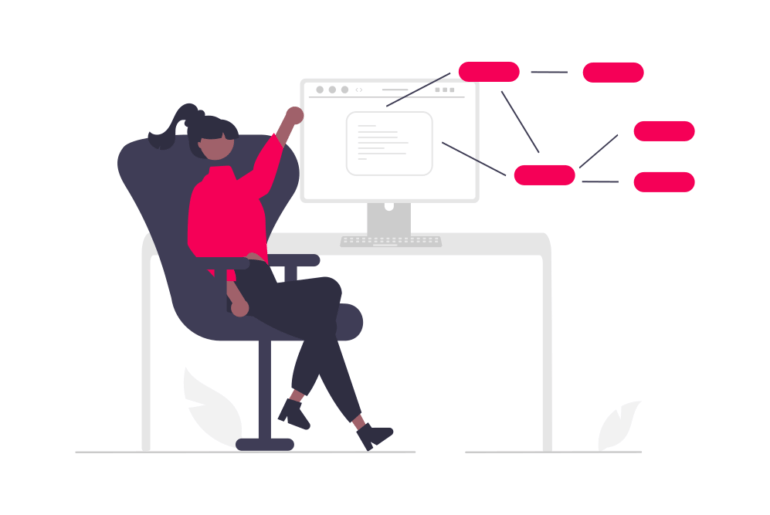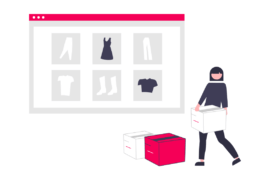What is Data Clean Room, and hows does it work? Find out answers to all these questions as well as data clean rooms benefits, types, and alternatives for publishers.
Today it become more essential than ever for brands to address these security concerns and earn their consumers’ loyalty. So, what if there was a service that takes care of both the advertiser and the client’s concern i.e. giving access to first-party data for the former and keeping the data directly inaccessible and secure from the foreign eye? Well, there is, and that brings us to our topic of concern today – Data Clean Rooms.
70% of online consumers today demand rather than anticipate a personalized experience. While there is a large crowd who are willing to give away crucial first-party data when the incentives are appealing enough, there’s also over 63% of the crowd who’ve raised security concerns about their data, often even terminating their relations with a brand if they tend to get too invasive.
However, needless to say, brands are still not careful enough, and 80% are still reliant on third-party cookies for their decision-making.
Data clean rooms are where walled gardens store collected data for marketers to analyze. They don’t use customer-level data, so privacy compliance is still upheld.
In this guide, we’ll go over what data clean rooms are, the different types of rooms that can be used, who can use them, and why publishers should care.
Also Read: How Publishers are Preparing for the Cookieless Solutions
What is a Data Clean Room and How Does it Work?
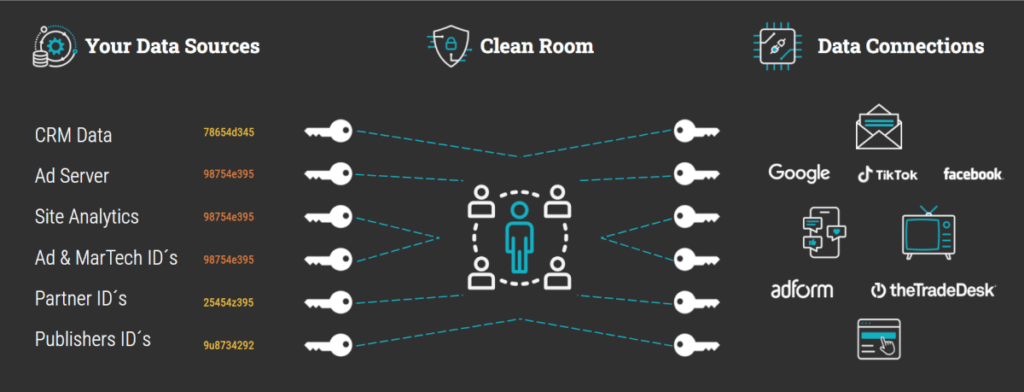
A data clean room is a platform where a brand can compare its user data and perform its decisions with the ‘clean’ data. However, this is an automated process, and the brand or advertiser can only use the data available and not have access to it.
How this works is that multiple brands, small or multinational, submit their first-party customer data into a platform where all of this data gets stored in groups. Now say a new advertiser joins the platform and inputs their first-party data, and then compares it to the data that is already available. This process can aid in rooting out any inconsistencies and refining their advertising and decision-making process.
Now, depending upon your goals and status, you can opt for the rooms that are offered by gigantic brands like Amazon or Google, who offer their rich warehouse of data to the consumers who use their marketing platforms.
You can also opt for the limited and independent data rooms, which are made solely for the publisher and advertiser to share data securely without raising privacy concerns. Or, you can opt for the larger data clean rooms, which are owned by again big brands like TikTok or Disney, which also work with massive warehouses of user content and data.
Different Types of Data Clean Rooms
Data clean rooms can be divided into 4 broad categories, there are – Diversified Providers, Walled gardens, Mobile Measurement Partners, and Pure Players.
- Diversified providers are that who operate in a similar or a related industry.
- The second one, Walled Garden, is usually large tech corporations like Amazon and Facebook, whose operations are not limited to the field.
- The third, the Mobile Measurement Partners (MMPs), are platforms that offer cross-channel and user standard data for analysis that works according to the business ideas of mobile apps.
- And finally, the Pure Players are the smaller-scale data clean room providers whose jobs are to offer software solutions to other brands. You can opt for any of these, whichever you find the most suited to your goals.
These are mainly used by marketers who already spend a lot of their advertising budget on these platforms. However, marketers don’t just work within walled gardens.
Google Ads Data Hub
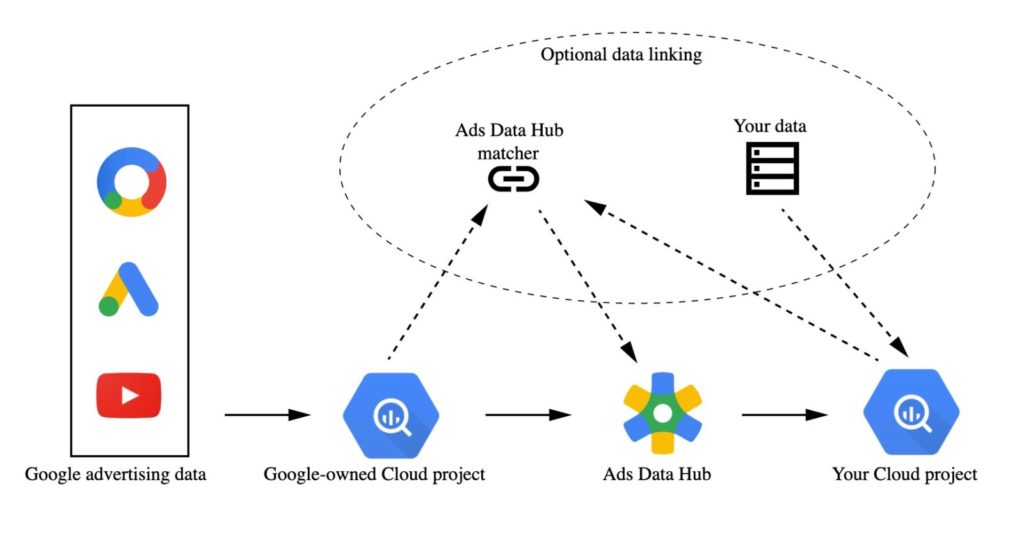
Partner data cleanrooms can be used between two partners (like a publisher and an advertiser) to share their data safely. Each partner can apply strict controls on how much of their data is shared.
Also Read: Programmatic Advertising: A Quick Guide For Publishers
The Many Functions of a Data Clean Room
Now that we know what it is, why should we care about it? In one word, measurement.
How a data clean room works are quite linear; however, it does offer multifaceted applications which appeal to the regular marketer. And these promising services include:
Addresses Privacy Concerns
A data clean room never allows a brand or individual to see or duplicate first-hand data. The data stays only in the data clean room, and several heavy protective measures are applied to it, for instance, pseudonymization, noise injection, restricted access, and so on.
Offers a Larger Library of User Information
Say you are the owner of a startup, and your library of user information isn’t so much enhanced. You can utilize a data clean room to work with a much larger data warehouse and perform more detail-oriented actions.
Helps Evaluate Marketing Campaigns
Data clean rooms allow helpful insights to brands upon their campaign performance, consumer segmentation, their purchase behaviour, and so on.
Makes Complex Data Analytics Simple and Accessible
As established, the well-established data clean rooms make easy complex Data Analysis for all brands, who can seek valuable insight into such in-depth actions without being an expert Data Scientist or Analyst.
Helps Build In-Depth User Personas
Most data clean rooms offer platforms for brands to work on building custom audiences which is a key tactic today in refining one’s ad targeting.
Increase Campaign Reach
Data clean rooms open up a much larger world for the publisher or the advertiser who can focus on doubling their campaign reach with the multitude of data available in a data clean room. Say you want to upsell your products to a specific age range; the room will offer a much larger audience to what you already have and who fall under your target audience.
Thus a data clean room doesn’t just serve the consumer by keeping their data private and secure from the third eye yet offers them the personalized experience they expect from brands. It is extremely helpful for brands to improve their overall advertising campaign and better their decision-making process.
Brands that start to use data clean rooms now should be better positioned in the near future as traditional advertising becomes a thing of the past. Those who invest in a strong first-party data strategy will now have a competitive advantage as they work with strategic partners to share data and unlock new revenue opportunities securely.
Top 5 Brands that Provide Data Clean Rooms

We are well aware of Google’s data warehousing capacity. Thus the Google Ads Data Hub is, needless to say, one of the top beneficial solutions, where data is gathered from a multitude of services – Google Ads, Google Campaign Manager, YouTube, Display and Video 360, and so on.
However, this data is also extremely secure, where one can create unique and detailed reports to improve their marketing without intruding into personally identifiable data.
Habu
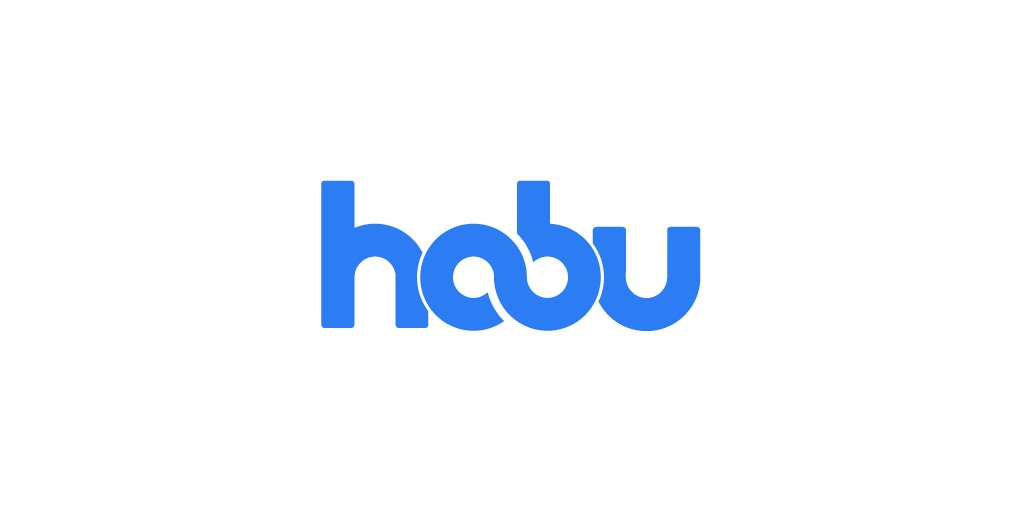
One of the world’s top platforms for data clean rooms, Habu has teamed with other luminaries of the sector like Snowflake and Disney.
The most recent and sophisticated Habu product is CleanML. Companies can use it to create, train, and improve sophisticated machine learning models because this distributed data clean room is equipped with a strong machine learning component.
The Habu products employ cutting-edge privacy-focused features and strategies to shield each party’s data while preserving access to the overall result.
Snowflake

Snowflake is a well-reputed name for being one of the top reliable data warehouse platforms, making its prime product, the Data Cloud or the data clean room, an excellent service that runs with minimal IT admin support.
It is known for offering its clients a unique environment where a brand can simultaneously work with several parties, participating in the secure sharing of data without ever losing control over the user-owned data.
This beats the regular clean rooms, which only allow two parties at a time. It also offers deeper and more efficient real-time analysis, making it a top opted-for product in retail, media, entertainment, and everywhere.
Amazon

Built on Amazon Web Services, the Amazon Marketing Cloud is a comprehensive data clean room solution that offers multiple services to the advertiser.
Comparing and evaluating two data sources—data advertiser’s sets and data sets collected from Amazon Advertising events—aids businesses in determining the true impact of cross-media investments.
Disney
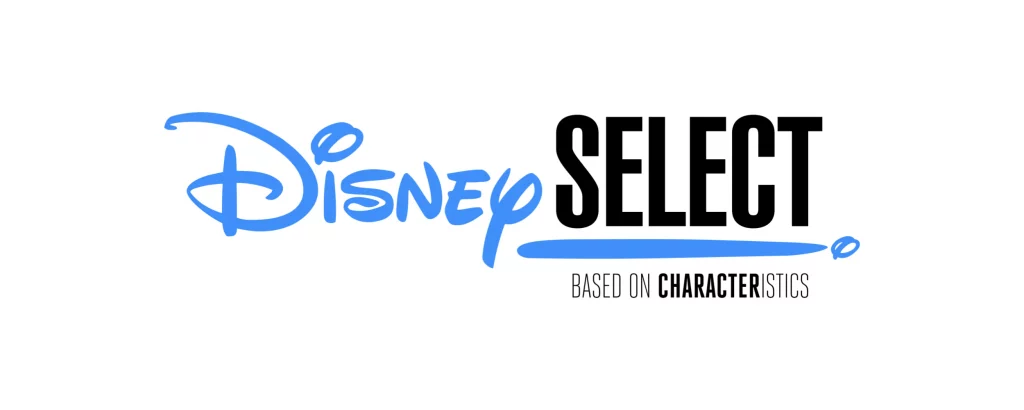
Disney’s Media clean room may be fairly new, but it is built by partnering with some of the strongest leaders in the industry – such as Snowflake, InfoSum, and Habu. Thus, naturally, it is one of the most immersively built clean rooms with over a thousand groups or categories of first-party data.
This cloud-built platform has become reputed for the very accessibility and adaptability that most brands bank upon.
Also Read: What are the Types of Cookieless Data for Publishers
Other Efficient Alternatives of Data Clean Rooms
Universal IDs
These duplicate the function of third-party cookies, giving advertisers the ability to work out cross-network attribution without invading the user’s privacy or getting access to their personal data.
Browser-Oriented Tracking
Browser-oriented targeting is a method where users are grouped together based on their common traits, and the advertisements are done accordingly. ‘This is usually the native feature of a browser or is in-built, and if as effective as third-party cookies.
Final Words
A data cleanroom is an encrypted, secure location where marketers can add their first-party data. That data is anonymized, layered, and matched with the aggregated data from the cleanroom provider. The data can be from a walled garden or be shared between two partners.
Since the privacy concerns and, with it, the news of eliminating third-party cookies have been going around for a while, there’s a large crowd that’d benefit from data clean rooms and their alternative solutions.
Data clean rooms can not only aid massively in your advertising campaigns, but they can also be the necessary bridge of trust and loyalty with your clients.
FAQ
A data clean room is a platform where many brands come together and submit their first-party data, which is then encrypted and made secure, to create detailed analysis reports to help the brands with their operations and advertising without getting direct access to the personally identifiable data.
The top data clean rooms of 2022 are – Google Ads Data Hub, InfoSum, Habu Clean Ml, Disney Advertising Sales, Amazon Marketing Cloud, and Snowflake.
Data Clean Rooms offer marketers the ability to build more relevant audiences, continuously improve their customer experience, fuel cross-platform planning and attribution, optimize reach and frequency measurement, and perform deeper campaign analysis.
Some other great alternatives to data clean rooms are – universal IDs, and browser-oriented tracking.

Shubham is a digital marketer with rich experience working in the advertisement technology industry. He has vast experience in the programmatic industry, driving business strategy and scaling functions including but not limited to growth and marketing, Operations, process optimization, and Sales.
